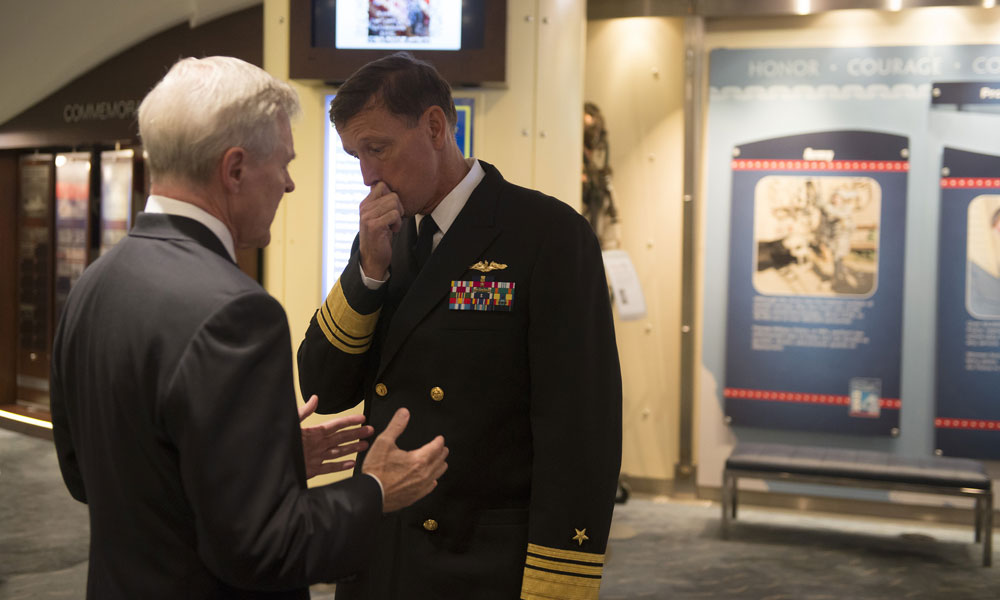
Workplace Violence: Preventing a Tragedy at the Office
As investigators search for a motive in the Washington, DC, Navy Yard shooting, the tragic incident draws attention to the importance of employee-assistance programs and effective policies.
No one thinks that a tragic incident like the shooting that occurred at the Navy Yard in Washington, DC, on Monday could happen at their office. But the fact remains that it’s nearly impossible to predict such an event, which makes being prepared that much more important.
Information is still being uncovered about Aaron Alexis—the military contractor who authorities say used his security clearance to gain access to Building 197 at the Navy Yard, where he opened fire on coworkers—but early reports indicate he may have been a disgruntled worker with a history of anger management and mental-health issues.
“We’re always shocked by any of these events, but we are also especially concerned about those who are failing to be identified and treated appropriately.”
“Anyone who is in our field, related to mental-health services, we’re always shocked by any of these events, but we are also especially concerned about those who are failing to be identified and treated appropriately,” said George Martin, president of the Employee Assistance Society of North America (EASNA). “Those who remain untreated and unidentified are especially at risk to create these tragic events.”
EASNA provides resources on its website to help employers identify different signals that would suggest there may be problems with the work environment and how to address a potentially troubled employee. Having an employee-assistance program in place, though, opens doors to a variety of training and services that can help prevent violent events, Martin said.
“Many employee-assistance program companies will provide that training for their clients to their employees and managers,” he said. “Also, part of that is to create a safety plan, a response plan, and create a strategy that secures a work environment from any harm, hopefully.”
The programs can also help an individual who feels as though they may be going down the wrong path.
“Employee-assistance programs are especially adept at understanding how the troubled employee’s condition can worsen to the point that they feel like this kind of option is reasonable,” Martin said. “It gives the angry employee an opportunity to seek assistance at no cost to them, and they’re working with a mental-health professional who will help them to absolve their anger, understand what their anger is about, and to hopefully find other options and help them regain a sense of balance in their life.”
An employer’s policies relating to workplace violence, which might include zero-tolerance policies and disciplinary policies, are important as well, Martin said. “Policies are an important beginning point for groups to develop a response plan, and then also to share that plan with their employees, because no policies are any good unless the employees are aware of them. This may act as a prevention element for somebody who recognizes that they might have a lot of anger as well.”
The programs are also helpful in the aftermath of a traumatic event.
“They assess the impact, not only what kind of immediate harm has been conducted, but also what’s the emotional impact upon the workforce,” Martin said. “EAP professionals can come in to meet with employees and steer them back toward business as usual, or, for those who can’t shake the traumatic experience, it gives them an avenue to find some ways in which they can deal with it.”
Following up in the weeks after the incident is important as well, Martin said. “Monitor how the employee workforce seems to be doing, and also ask the question some weeks later, ‘Do we need to do something else to follow up with each other, or have we moved past this?’ Much of that will be determined by the nature of the event itself.”
Do you have experience working with an employee-assistance program at your organization? Share your story in the comments.
Secretary of the Navy Ray Mabus speaks with Vice. Adm. William Hilarides, prior to a memorial service honoring victims in the Navy Yard shooting. (U.S. Navy photo/Flickr)






Comments